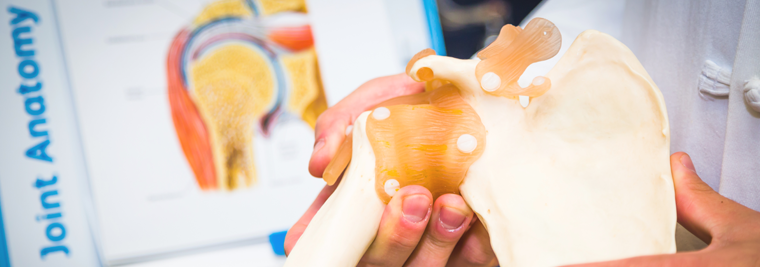Find care now
If you are experiencing a medical emergency, please call 911 or seek care at an emergency room.

Researchers at MedStar Health sought to assess failure rate, outcomes, and patient satisfaction in patients who underwent anterior cruciate ligament (ACL) repair with suture augmentation for clinical instability and proximal avulsion of the ACL. ACL avulsion fractures have a high incidence in most injuries around the knee joint. Improved surgical technology, rehabilitation principles, and minimally invasive surgical techniques have led to renewed interest in primary ACL repair.
“Anterior Cruciate Ligament Repair with Suture Augmentation for Proximal Avulsion Injuries” was recently published in Arthroscopy, Sports Medicine, and Rehabilitation. The research team retrospectively reviewed suture-augmented ACL repairs performed by a single surgeon between January 2014 and June 2016 for proximal ACL avulsion. Patients were followed in the office until they were released to return to unrestricted activity. All patients were contacted by phone to collect data such as recurrent clinical instability, number of reoperations, reason for reoperation, and return to sport or previous activity level. An automated database was used to collect functional and clinical outcomes scores.
The team hypothesized they would find significantly improved functional outcome and a high percentage of patients who exceeded the minimum clinically important difference (MCID) and patient acceptable symptom state (PASS) threshold for ACL surgery. The PASS threshold for Knee Injury and Osteoarthritis Outcome Score (KOOS) components in patients who underwent ACL reconstruction has been reported as pain, 88.9%; symptoms, 57.1%; activities of daily living (ADL), 100%; sport/recreation, 75%; and quality of life (QoL), 62.5%.
Of 172 patients who underwent ACL surgery during the study period, 28 (16%) underwent ACL repair with suture augmentation. One patient was unavailable for follow-up. Of these 27 patients, 17 were diagnosed with Sherman type I tear and 10 were diagnosed with Sherman type II tear. All 27 patients available for follow-up had post-operative scores, and 14 patients had preoperative scores. Of the 27 patients, 4 recurrent ACL injuries required revision to reconstruction. The remaining 23 patients had successful ACL repair with no clinical instability and no subjective complaints at final follow-up. The results include 11 patients with baseline data, demonstrating significant improvements in KOOS score and final follow-up score in relation to the MCID for that instrument: pain (73%), symptoms (100%), ADL (64%), sport and recreation (80%), and quality of life (45%).
The research concludes that patients with proximal ACL avulsion, ACL repair with suture augmentation demonstrated high functional outcome and improved patient-reported outcomes at 2-year follow-up. This procedure shows promise for treating patients with clinical instability from proximal ACL avulsion.
The study team included Wiemi A. Douoguih, M.D.; Ralph T. Zade, M.D.; Blake M. Bodendorfer, M.D.; Yalda Siddiqui, B.S.; and Andrew E. Lincoln, D.P.H.














